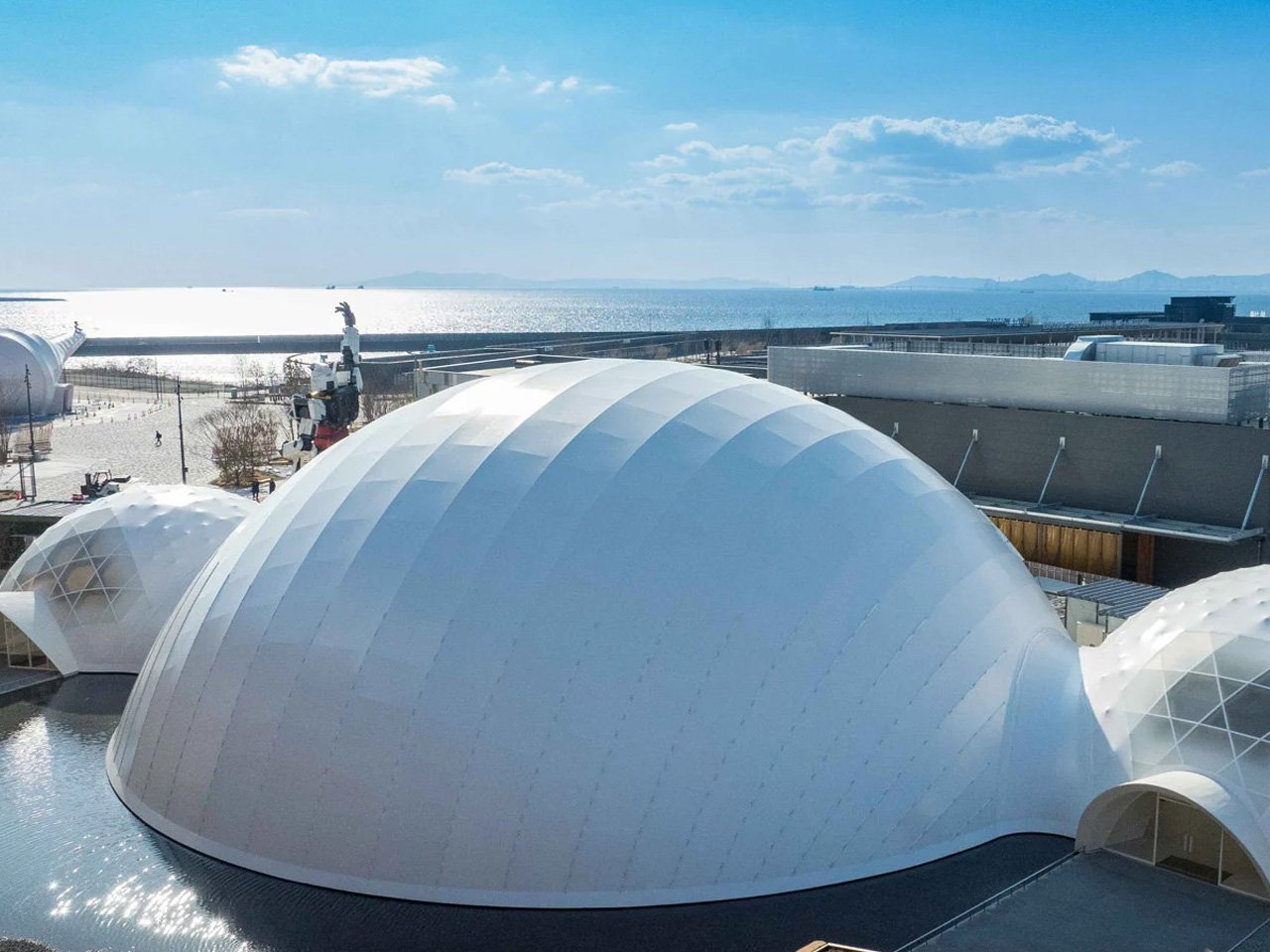Japanese architect Shigeru Ban designed the Blue Ocean Dome pavilion for Expo 2025 Osaka using cardboard tubes, laminated bamboo, and carbon-fibre reinforced plastic tubes. The pavilion includes exhibits by designer Kenya Hara and focuses on the value of the world’s oceans. Located just outside The Grand Ring, the structure consists of a large central dome with two smaller domes on either side, all covered by a polycarbonate skin. The project was commissioned by Zero Emissions Research and Initiatives (ZERI), a non-profit organization. The design highlights sustainable building materials and serves as a platform for raising awareness about ocean conservation and environmental responsibility.
Designer: Shigeru Ban
Shigeru Ban designed the three pavilion structures to be lightweight, easy to disassemble, and to minimize waste after Expo 2025 Osaka. The entrance, Dome A, is constructed from laminated bamboo, chosen over natural bamboo to comply with Japanese building regulations. The exit, Dome C, uses a molecular-like framework of cardboard tubes, a signature material in Ban’s work.
This approach emphasizes sustainability and adaptability, allowing for the reuse or recycling of materials once the event ends. The design reflects Ban’s commitment to environmentally conscious architecture while meeting practical requirements for temporary event structures. “In countries that have very strong building regulations, we cannot use natural bamboo as a building material, including in Japan,” said Ban. “However, if we laminate the bamboo, we can control the quality, strength, and durability. So in the pavilion, I’m using laminated bamboo as a structure in a very unusual way.”
The central dome, Dome B, is constructed from carbon-fibre reinforced plastic tubes, a material typically used in aerospace and automotive industries rather than architecture. Ban selected this material for the pavilion to eliminate the need for concrete piles in the foundation. This choice aligns with the project’s emphasis on lightweight construction and ease of disassembly, while also reducing the environmental impact associated with traditional building methods.
“I made my building using carbon-reinforced plastic, which weighs less than the soil we removed for the foundation, which means we don’t need any concrete piles,” Ban said. “The construction period also becomes shorter, so this is really a new way of using carbon fibre for the building industry.”
Inside, the Blue Ocean Dome presents exhibits focused on the importance of the world’s oceans and the impact of pollution caused by human activity. The interior design and exhibitions in Dome A and Dome B were overseen by Japanese designer Kenya Hara, known for his role as art director at Muji. Dome B features a 360-degree film projection, providing an immersive experience for visitors. The displays showcase both environmental awareness and the need for ocean conservation. The layout and content are designed to inform and engage guests, reinforcing the pavilion’s message about the significance of protecting marine environments.
The post This Sustainable Japanese Pavilion Was Built Using Cardboard & Bamboo first appeared on Yanko Design.

